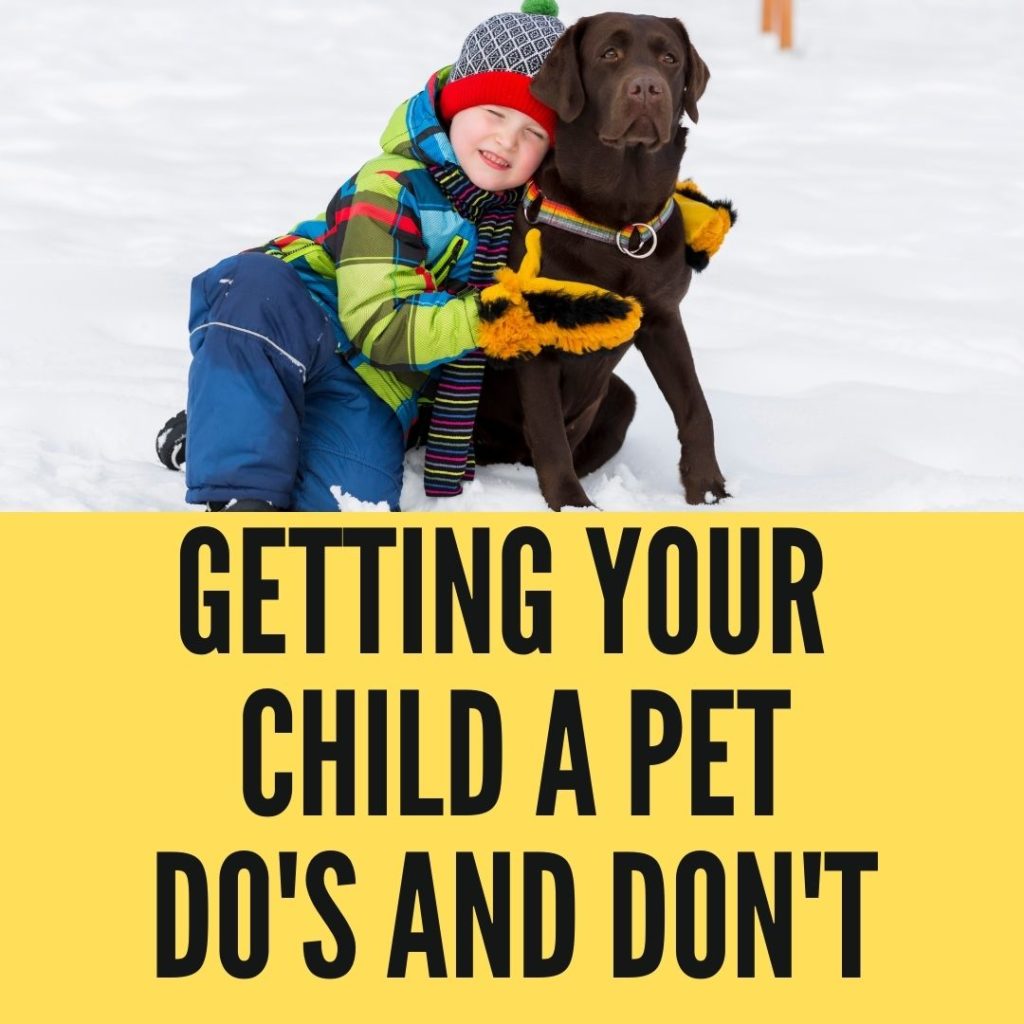Your little one has begged you for a puppy since they first learned to talk. You weighed the pros and cons and are wavering in your “no” resolve. What could go wrong?
Pets offer a loving and gentle way to teach your child responsibility. However, not everyone is up to the task of taking care of an animal.
Here’s why to consider adopting a companion and six things you should not do when honoring your little one’s request.
Why Should You Consider Getting Your Child A Pet?
Pets offer multiple benefits to kids. Here are a few.
1. It Teaches Responsibility
How to Stop Your Child From Tormenting Your Pet? Well, Getting a pet introduces them to having another living creature rely on them to stay alive. It’s the closest thing to becoming a parent outside of reaching adulthood and taking that step.
As such, pets can teach your children responsibility in a loving, kind manner. Instead of harsh “shoulds,” they feel inspired to tackle their chores because they care for their furry friends.
2. It Helps Them to Stay More Active
Currently, fewer than one in ten children gets the physical activity they need, which may be why obesity rates remain at epidemic levels.
Pets get little bodies moving — even hamsters need their cages cleaned while they exercise in a play ball.
3. It Alleviates Loneliness
Kids aren’t immune to loneliness, and they may endure increased isolation due to the changes spurred by the novel coronavirus.
If they miss their friends while they homeschool, a pet can help make up for the lack.
4. It Benefits Their Mental Health
Fully 74% of people with pets say they improved their mental health, and others in their lives also notice the attitude change.
If your child developed signs of anxiety or depression during the shutdown, a pet could regain a sense of normalcy.
5. It Might Reduce Future Allergies
Getting your child a pet young may reduce their chances of allergies later in life.
Researchers from Sweden studied over 1,200 children who had a pet before the age of one.
Households with five or more cats or dogs had zero reports of symptoms like hay fever and sinusitis.
What Should You Not Do When Getting Your Child A Pet?
That said, owning an animal comes with a significant degree of responsibility.
As the parent, you need to accept it if your child fails to fulfill their obligations, so avoid the following six things you should not do when getting your child a pet.
1. Doing So as a Surprise
When you watch made-for-TV movies, every child squeals in delight when their parent brings home a puppy.
Not every real-life kid enjoys animals, though. Some sensitive toddlers may react with fear — make sure your little one expresses interest before gifting.
2. Underestimating the Time Commitment
The time required to care for an animal depends on its species, breed, and age.
You can care for a goldfish for little more than an hour a week. Conversely, young, rambunctious puppies can eat up two to three hours of your time every day.
The moral? If you’re working multiple part-time jobs to eke by during the shutdown while juggling homeschool, hold off on the Jack Russell terrier. Opt for a gerbil or betta.
3. Not Investigating the Financial Ramifications
Pets can cost a pretty penny. If an emergency arises, vet bills can soar into the thousands, and few parents relish telling their child they can’t afford treatment.
Consider the cost of the health insurance part of ownership.
Plus, some breeds eat — a lot. A St. Bernard needs five to six cups of dry food at a bare minimum daily. If your pet requires a special diet, costs can soar. Make sure you have a well-padded emergency fund.
4. Overlooking Allergies
Tragically, two out of five owners who surrender pets to shelters cite household allergies.
To avoid heartbreak and animal cruelty, let your child visit with other furry critters before investing in one.
You don’t want to discover that Fifi makes sleep impossible for your little one due to dander.
5. Misreading Your Child’s Temperament
Your child may cry, stamp their feet and throw a complete tantrum for a puppy.
However, if they did the same when the “Baby Shark” tablet came out — which now gathers dust in their playroom — consider how sincere their request is.
It’s one thing if they’ve nagged you every day for two years. It’s quite another if their best friend recently adopted a kitten, and they want in on the “cool kids” club.
6. Treating Your Pet Like an Object
A pet is not a toy or another object that you can discard or give away when it outlives its usefulness.
Companion animals are capable of emotion, and they are living creatures that you shouldn’t merely surrender on a whim when they become troublesome.
Plus, if you’re investing in an animal to teach your child responsibility, what lesson do they learn if you take their Easter bunny to the shelter two weeks after the eggs turn rotten?
You’ve shown them that it’s okay to give up, even when it hurts others — not the moral value most parents hope to instill.
Know What Not To Do When Getting Your Child A Pet
Pets are fabulous family additions and teach your children responsibility.
However, as a parent, you must carefully consider if your little one is ready for the obligations that come with caring for a separate, living creature.

